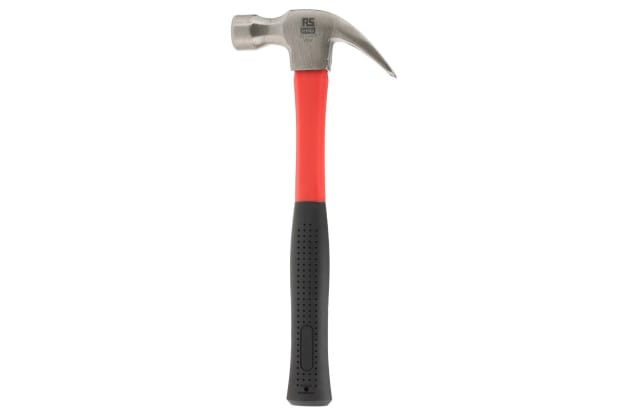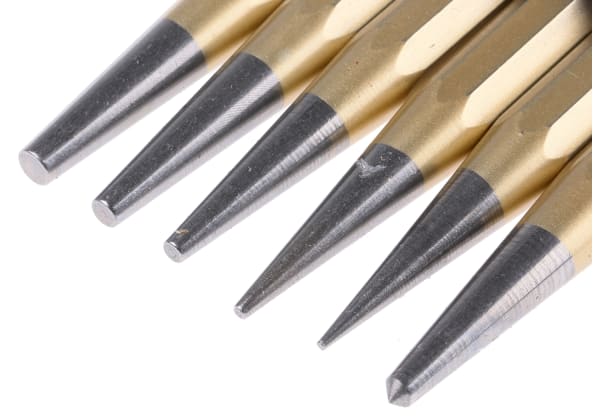- Published 2 May 2023
- Last Modified 29 Aug 2023
- 7 min
A Guide to Hammers and Sledgehammers
From claw hammers to sledgehammers, learn everything you need to know about hammers, including their types, uses, and how to use them safely, in this comprehensive guide.

Hammers and sledgehammers are some of the most common and versatile hand tools used across a wide range of industries, from construction and carpentry to DIY and automotive repair. While they may seem simple in design, these tools come in various shapes and sizes, each designed for a specific purpose.
In this guide, we will take a closer look at what hammers and sledgehammers are, how they are put together, the different types available to buy online, and the key factors to consider when choosing the right tool for your job.
What are the Parts of a Hammer Called?
Both hammers and sledgehammers are put together similarly. The head is attached to the handle using one of two methods - a wedge or a screw. A wedge is a small piece of wood or metal that is driven into the end of the handle to hold the head in place. A screw, on the other hand, uses a threaded metal rod to attach the head to the handle.
The handle of a hammer or sledgehammer is usually made of wood or fibreglass, with the latter being more durable and resistant to damage from weather and moisture. The handle is typically shaped to provide a comfortable grip and prevent slipping. It may also feature a rubber or plastic coating for added grip.
Hammer vs Sledgehammer Definition
Hammers are handheld tools used to strike and drive nails, pins, or other small objects into surfaces. They typically have a relatively small head and a shorter handle than sledgehammers, making them suitable for lighter tasks.
Sledgehammers, on the other hand, are larger and heavier tools with long handles and a much larger head than hammers. They are designed to deliver a powerful impact and are typically used for heavy-duty tasks such as breaking concrete or driving stakes into the ground.

A Brief History of the Claw Hammer
The claw hammer is one of the most widely used types of hammers today. The hammer's distinctive shape, with a flat striking surface on one end and a curved, claw-like shape on the other, was developed in the early 18th century.
Before the invention of the claw hammer, carpenters used a variety of different hammers for their work, including mallets and hammers with blunt, flat heads. The claw hammer's design was a significant improvement, as it allowed carpenters to both drive nails into surfaces and extract them with ease.
Over the years, the claw hammer has become one of the most popular and versatile tools in the construction industry. Today, claw hammers are available in a wide range of sizes and materials, and the claw hammer's enduring popularity is a testament to its utility and versatility, as well as its simple but effective design.
Uses of Hammers and Sledgehammers
Hammers and sledgehammers are versatile tools that can be used for a wide range of tasks, from simple repairs to heavy-duty construction projects. Some common uses for hammers and sledgehammers include:
- Driving nails and pins into surfaces
- Breaking up concrete and hard materials
- Removing tiles and other flooring materials
- Demolishing walls and structures
- Creating holes in walls and surfaces
- Shaping metal and other materials
- Driving stakes into the ground
How to Use Hammers and Sledgehammers Safely
While hammers and sledgehammers are essential tools, they can also be dangerous if not used properly. Here are some basic safety tips to keep in mind when using hammers and sledgehammers:
- Always wear appropriate PPE, such as safety glasses, work gloves, and sturdy footwear
- Use the right tool for the job and choose a tool that is appropriately sized and weighted for the task at hand
- Make sure the work area is clear of clutter and debris
- Use proper technique when striking the surface with the hammer or sledgehammer. Hold the tool with both hands and use a fluid, controlled motion to strike the surface
- Never strike the tool with another tool or hard object, as this could damage the tool or cause injury
- After use, store the tool in a safe and secure location
By following these basic safety tips, you can minimise the risk of injury and ensure that you get the most out of your hammers and sledgehammers. Remember, safety should always be your top priority when working with any kind of tool or equipment.
Different Types of Hammers
There are many distinct types of hammers available, each designed for a specific purpose. Some of the most common types include:
Claw Hammer
Claw hammers are among the most common types of hammers and are designed for general-purpose use. They feature a curved claw at the back of the head, which is used for removing nails.
Ball Pein Hammer
Ball pein hammers are designed for shaping and striking metal objects, such as chisels and punches. They feature a rounded, ball-shaped head and are available in various weights.
Framing Hammer
Framing hammers are larger and heavier than claw hammers and are designed for use in construction and framing work. They feature a straight claw and a longer handle for increased leverage.
Brick Hammer
A brick hammer has a chisel-shaped head that is used for chipping and cutting bricks and other masonry materials. It has a narrow striking face that allows for precision work and a square-shaped head that can be used for tapping bricks into place.
Mallets
A mallet has a large, round head made of soft materials such as rubber or wood. Mallets are commonly used in woodworking, metalworking, and other tasks that require a gentle touch. They are particularly useful for tasks such as assembling furniture, tapping wooden dowels into place, or striking chisels or punches.
Mauls
A maul is a heavy-duty sledgehammer with a large, flat head. It is designed for splitting logs and other heavy-duty work.
Engineer’s Hammer
Engineer's hammers are the most common type of sledgehammer and are designed for general-purpose use. They feature a flat face and a slightly rounded pein on the opposite side of the head.
Lump Hammer
A lump hammer has a short handle and a heavy, square-shaped head. Lump hammers are commonly used in the construction industry, particularly for tasks such as breaking up concrete or driving steel stakes into the ground.
Sledgehammers
Sledgehammers are larger and heavier tools than standard hammers, designed for heavier-duty work. They typically feature a long, straight handle and a head weighing between 2 and 20 pounds. The heads of sledgehammers are usually made of steel and are wider and flatter than those of hammers.
Choosing the Best Hammer for You
When choosing a hammer or sledgehammer for a specific job, there are several factors to consider. These include:
- Size and Weight: The size and weight of the tool will depend on the specific task at hand. For general-purpose use, a claw hammer is usually sufficient. For heavier-duty work, a framing hammer or larger sledgehammer may be required
- Type of Head: The type of head will depend on the specific task at hand. For general-purpose use, a claw hammer with a curved claw is usually sufficient. For metalworking, a ball pein hammer is the best choice. For delicate tasks, such as woodworking, a rubber mallet is an excellent choice
- Handle Material: The handle material will depend on the specific task at hand. For general-purpose use, a wooden or fibreglass handle is usually sufficient
Brands and Manufacturers
There are many leading brands of hammers and sledgehammers available to buy online, each with unique features and benefits. Some of the most popular brands include:


